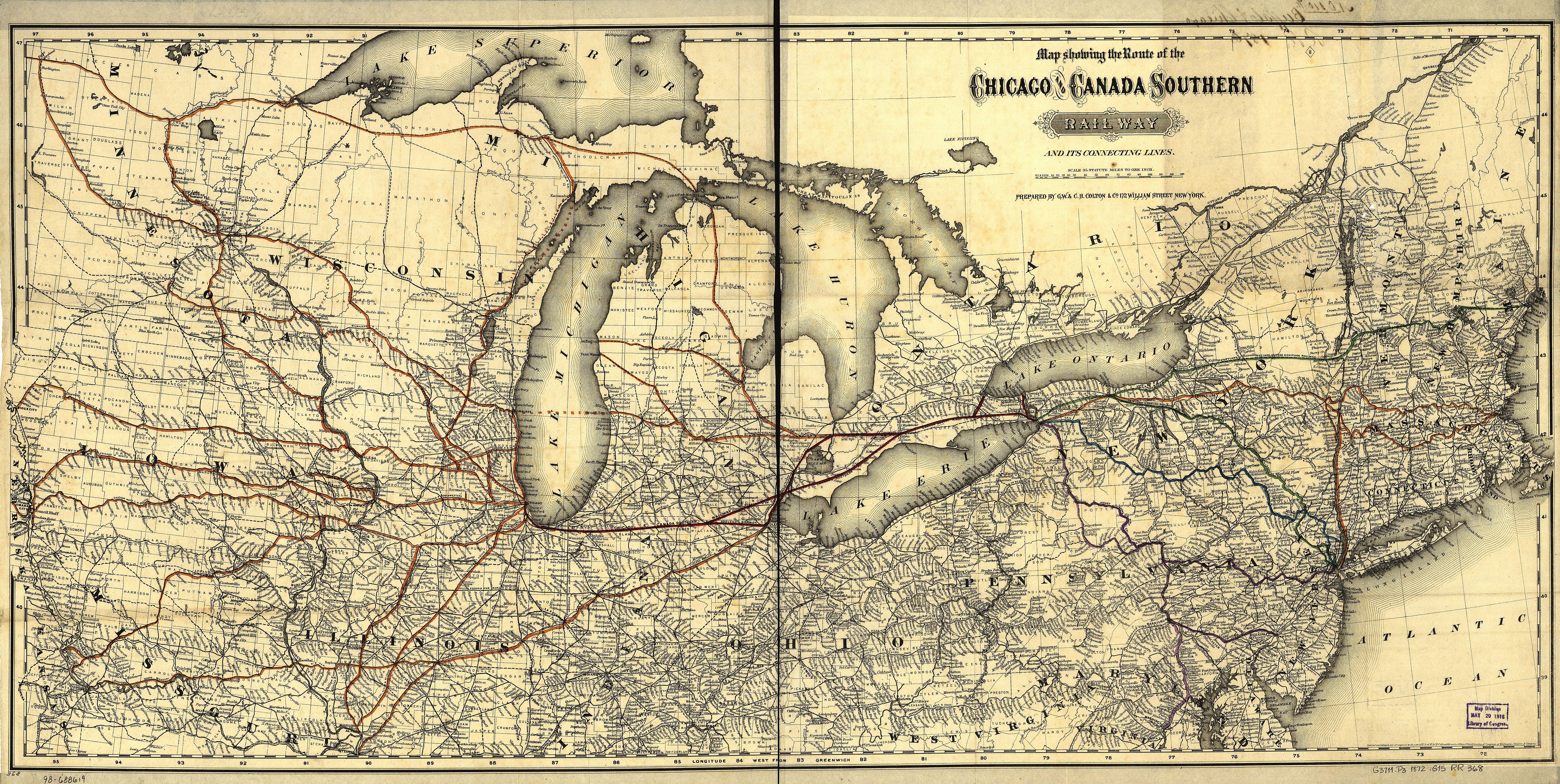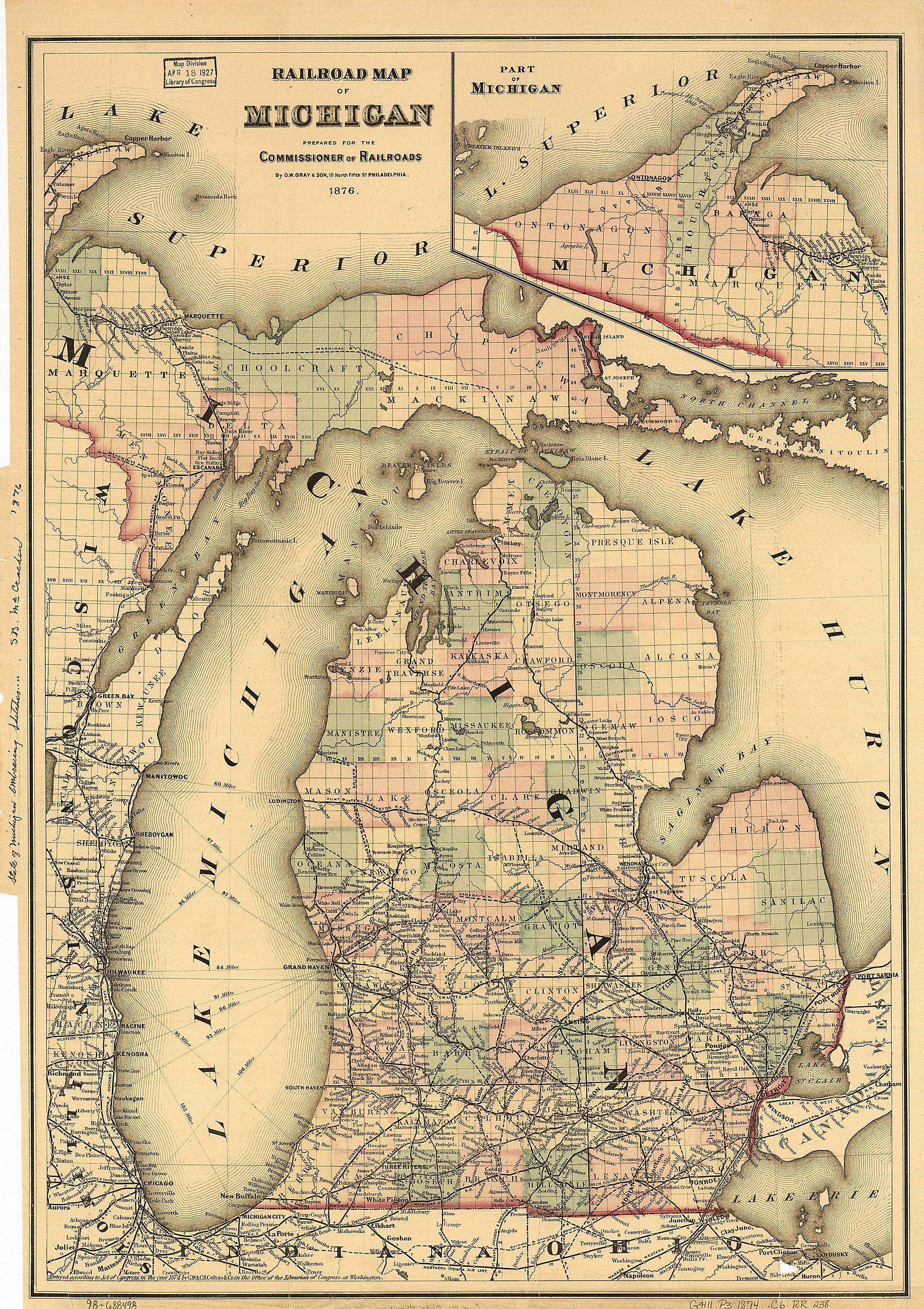Charlevoix County, Michigan facts for kids
Quick facts for kids
Charlevoix County
|
||
|---|---|---|
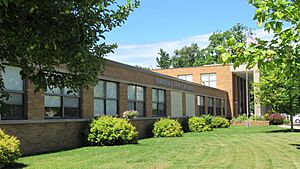
Charlevoix County Building
|
||
|
||
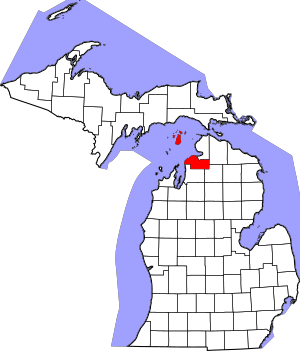
Location within the U.S. state of Michigan
|
||
 Michigan's location within the U.S. |
||
| Country | ||
| State | ||
| Founded | 1840 (created) 1869 (organized) |
|
| Named for | Pierre François Xavier de Charlevoix | |
| Seat | Charlevoix | |
| Largest city | Boyne City | |
| Area | ||
| • Total | 1,390 sq mi (3,600 km2) | |
| • Land | 416 sq mi (1,080 km2) | |
| • Water | 974 sq mi (2,520 km2) 70%% | |
| Population
(2020)
|
||
| • Total | 26,054 | |
| • Density | 62/sq mi (24/km2) | |
| Time zone | UTC−5 (Eastern) | |
| • Summer (DST) | UTC−4 (EDT) | |
| Congressional district | 1st | |
Charlevoix County (/ˈʃɑːrləvɔɪ/ shar-LƏ-voy) is a county in the U.S. state of Michigan. The county seat is Charlevoix, and the largest city is Boyne City. Located in the Northern Lower Peninsula, Charlevoix County is bisected by Lake Charlevoix, Michigan's third largest inland lake. As of the 2020 census, the county's population was 26,054.
Beaver Island, the largest island in Lake Michigan, is located within Charlevoix County.
History
Surveyed and organized as Keskkauko County
Between 1840 and 1841, surveyors William Austin Burt, John Mullett and Charles W. Cathcart, surveyed much of Northern Michigan. Cathcart oversaw the internal lines survey for 34N 08W, the region which would later be known as Charlevoix. Mullett and Cathcart laid out many of the townships in the new county including Charlevoix Township.
The county was originally organized in 1840 as Kesk-kauko in honor of a great chief of the Saginaw tribe, and name was changed from Resh-kanko to Charlevoix County in 1843. The county was named in 1843 for Pierre François Xavier de Charlevoix, a Jesuit missionary of the French colonial era.
Strangites gain power and re-organize Keskkauko into Emmet County
In 1847, a group of "Strangite" Mormons settled on Beaver Island and established a "kingdom" led by "King" James Jesse Strang. There were bitter disputes between Strang's followers and other white settlers. Strang, seeking to strengthen his position, gained election to the Michigan State House of Representatives. In January 1853, he pushed through legislation titled, "An act to organize the County of Emmet", which enlarged Emmet County by attaching the nearby Lake Michigan islands to Emmet county, as well as a portion of Cheboygan County and Keskkauko/Resh-kanko/ Charlevoix. Charlevoix was thus organized in 1853 as a township under Emmet County and consisted all of the nine townships in the southern half of Emmet County.
Popular dissatisfaction with Mormon power
Due to Strang's influence, Mormons came to dominate Emmet county government, causing an exodus of many non-Mormon settlers to neighboring areas. In 1855, the non-Mormon resistance succeeded in getting the Michigan Legislature to reorganize Emmet County. The islands, including Beaver Island and North and South Manitou Islands, were transferred into the separate Manitou County, which effectively eliminated Mormons from Emmet County government. After an assassination attempt on June 20, 1856, Strang died three weeks later.
Charlevoix Township splits off to become Charlevoix County in 1869
Emmet County continued to experience tensions as citizens clashed over whether to put the county seat at Little Traverse (Harbor Springs) versus Mackinaw City. In a contested election in 1867, residents voted to move the county seat to Charlevoix, which was upheld by a Circuit Court decision in 1868. However, in 1869, Charlevoix County was split from Emmet County, resulting in Charlevoix being the official county seat for Emmet county as well as for the newly formed Charlevoix County.
County seat wars – Charlevoix vs East Jordan vs Boyne City
In 1873, the Grand Rapids and Indiana Railroad was completed through the eastern side of Charlevoix county up to Petoskey, and the east side of Pine Lake became more and more populated. For example, Resort Township and Springvale Township, Michigan were formed in 1880 as a part of Charlevoix County. As new townships became established, Boyne City colluded with East Jordan to gain a requisite 2/3 majority of township supervisors to vote to move the county seat to East Jordan. In October 1884, 11 of the existing 16 township supervisors designated East Jordan to be the county seat. In October 1886, Boyne City convinced 2/3 of township supervisors to move the county seat to Boyne City.
Finally, in a January 1897 land deal with Emmet County and the state legislature, Charlevoix County took on three townships on Beaver Island while giving up Resort, Bear Lake, and Springvale townships to Emmet County. The resulting balance of township supervisor votes gave the City of Charlevoix enough votes to obtain the county seat after a 13-year hiatus.
Other history
The Ironton Ferry began operation in 1876, and Ironton soon became a location for iron manufacture.
There are ten Michigan state historical markers in the county, and the area was once home to a thriving culture of Odawa fishers, hunters, and fur trappers.:
- Big Rock Point Nuclear Power Plant
- Boyne City United Methodist Church
- Charlevoix Depot
- Greensky Hill Mission
- Horace S. Harsha House
- Horton Bay
- John Porter and Eva Porter Estate
- Mormon Kingdom
- Mormon Print Shop
- Norwood Township Hall
Geography
According to the U.S. Census Bureau, the county has a total area of 1,390 square miles (3,600 km2), of which 416 square miles (1,080 km2) is land and 974 square miles (2,520 km2) (70%) is water. It is the fourth-smallest county in Michigan by land area.
Mainland Charlevoix County features a shoreline on both Traverse Bays (Grand Traverse Bay and Little Traverse Bay) of Lake Michigan.
Lake Charlevoix, with 17,200 acres (7,000 ha) surface area and 56 miles (90 km) of shoreline, is a very prominent feature of the county. Gull, Hat, Pismire, and Shoe Islands, which are part of the Beaver Island archipelago, form the Lake Michigan division of the Michigan Islands National Wildlife Refuge, and two of them are part of the Michigan Islands Wilderness Area.
The county is considered to be part of Northern Michigan.
Adjacent counties
By land
- Emmet County (north)
- Cheboygan County (northeast)
- Otsego County (southeast)
- Antrim County (south)
By water
- Mackinac County (north)
- Leelanau County (southwest)
- Schoolcraft County (northwest)
National protected area
Communities
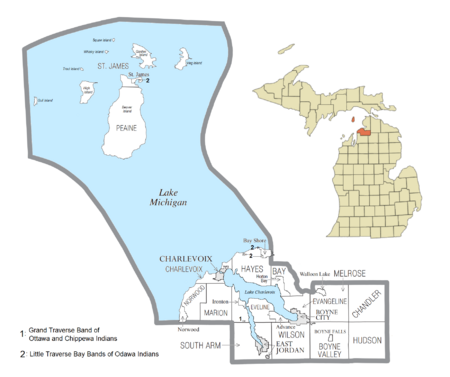
Cities
- Boyne City
- Charlevoix (county seat)
- East Jordan
Village
Civil townships
- Bay Township
- Boyne Valley Township
- Chandler Township
- Charlevoix Township
- Evangeline Township
- Eveline Township
- Hayes Township
- Hudson Township
- Marion Township
- Melrose Township
- Norwood Township
- Peaine Township
- South Arm Township
- St. James Township
- Wilson Township
Census-designated places
Other unincorporated communities
- Barnard
- Beaver Island
- Bonner Landing
- Boulder Park
- Burgess
- Clarion
- Martins Bluff
- Nomad
- Phelps
- Wildwood
- Zenith Heights
Indian reservations
Charlevoix County contains portions of two Indian reservations, both of which are branches of the federally-recognized Odawa tribe. The Grand Traverse Band of Ottawa and Chippewa Indians occupies a small reservation in southwest Evaline Township. The Little Traverse Bay Bands of Odawa Indians has four scattered reservations throughout the county—three small sections in Hayes Township and one isolated section in St. James Township on Beaver Island.
Demographics
| Historical population | |||
|---|---|---|---|
| Census | Pop. | %± | |
| 1870 | 1,724 | — | |
| 1880 | 5,115 | 196.7% | |
| 1890 | 9,686 | 89.4% | |
| 1900 | 13,956 | 44.1% | |
| 1910 | 19,157 | 37.3% | |
| 1920 | 15,788 | −17.6% | |
| 1930 | 11,981 | −24.1% | |
| 1940 | 13,031 | 8.8% | |
| 1950 | 13,475 | 3.4% | |
| 1960 | 13,421 | −0.4% | |
| 1970 | 16,541 | 23.2% | |
| 1980 | 19,907 | 20.3% | |
| 1990 | 21,468 | 7.8% | |
| 2000 | 26,090 | 21.5% | |
| 2010 | 25,949 | −0.5% | |
| 2020 | 26,054 | 0.4% | |
| 2023 (est.) | 26,159 | 0.8% | |
| U.S. Decennial Census 1790–1960 1900–1990 1990–2000 2010–2018 |
|||
As of the census of 2000, there were 26,090 people, 10,400 households, and 7,311 families residing in the county. The population density was 63 people per square mile (24 people/km2). There were 15,370 housing units at an average density of 37 per square mile (14/km2). By 2020, its population was 26,054.
In 2000, the racial makeup of the county was 96.31% White, 0.17% Black or African American, 1.54% Native American, 0.23% Asian, 0.09% Pacific Islander, 0.41% from other races, and 1.25% from two or more races. 1.04% of the population were Hispanic or Latino of any race. 21.8% were of German, 12.0% English, 11.0% American, 10.6% Irish and 8.4% Polish ancestry. 97.3% spoke English and 1.1% Spanish as their first language.
There were 10,400 households, out of which 31.80% had children under the age of 18 living with them, 58.40% were married couples living together, 8.10% had a female householder with no husband present, and 29.80% were non-families. 25.20% of all households were made up of individuals, and 10.50% had someone living alone who was 65 years of age or older. The average household size was 2.48 and the average family size was 2.96.
In the county, 25.90% of the population was under the age of 18, 6.50% from 18 to 24, 27.40% from 25 to 44, 25.20% from 45 to 64, and 14.90% who were 65 years of age or older. The median age was 39 years. For every 100 females there were 97.90 males. For every 100 females age 18 and over, there were 94.80 males.
In 2000, the median income for a household in the county was $39,788, and the median income for a family was $46,260. Males had a median income of $32,457 versus $22,447 for females. The per capita income for the county was $20,130. About 5.40% of families and 8.00% of the population were below the poverty line, including 10.00% of those under age 18 and 5.90% of those age 65 or over.
Transportation
State highways
 US 31 is a route that parallels the shore of Lake Michigan. The route passes through the city of Charlevoix, and can be used to access Traverse City to the south, and Petoskey and the Mackinac Bridge to the north.
US 31 is a route that parallels the shore of Lake Michigan. The route passes through the city of Charlevoix, and can be used to access Traverse City to the south, and Petoskey and the Mackinac Bridge to the north. US 131 is a north–south route in the east of the county. The route passes through Boyne Falls.
US 131 is a north–south route in the east of the county. The route passes through Boyne Falls. M-32 is an east–west route that begins in East Jordan, and continues southeast into Antrim County. The highway can be used to access Gaylord and Alpena, to the east.
M-32 is an east–west route that begins in East Jordan, and continues southeast into Antrim County. The highway can be used to access Gaylord and Alpena, to the east. M-66 is a north–south route that terminates at US 31 in Charlevoix. The highway is the longest state trunkline highway in the Lower Peninsula, and continues south to the Indiana border near Sturgis.
M-66 is a north–south route that terminates at US 31 in Charlevoix. The highway is the longest state trunkline highway in the Lower Peninsula, and continues south to the Indiana border near Sturgis. M-75 is a highway that runs entirely within Charlevoix County. The highway begins at US 131 in Boyne Falls, and continues northwest to Boyne City. The highway then turns northeasterly, and terminates once more at US 31 in Walloon Lake.
M-75 is a highway that runs entirely within Charlevoix County. The highway begins at US 131 in Boyne Falls, and continues northwest to Boyne City. The highway then turns northeasterly, and terminates once more at US 31 in Walloon Lake.
County-designated highways
 C-48
C-48 C-56
C-56 C-65
C-65 C-71
C-71 C-73
C-73 C-81
C-81
Airports
- Beaver Island is served by two airlines:
- Welke Airport
- Beaver Island Airport
Ferry service
- Beaver Island Boat Company maintains a regular auto ferry from Charlevoix:
- The Ironton Ferry at Ironton, Michigan crosses the south arm of Lake Charlevoix. It is a designated Michigan Historical Site and has been in operation since 1876.
Bus service
- Indian Trails provides intercity bus service with stops in the city of Charlevoix and Boyne Falls.
- County-wide dial-a-ride bus service is provided by the Charlevoix County Transit System.
See also
 In Spanish: Condado de Charlevoix para niños
In Spanish: Condado de Charlevoix para niños



